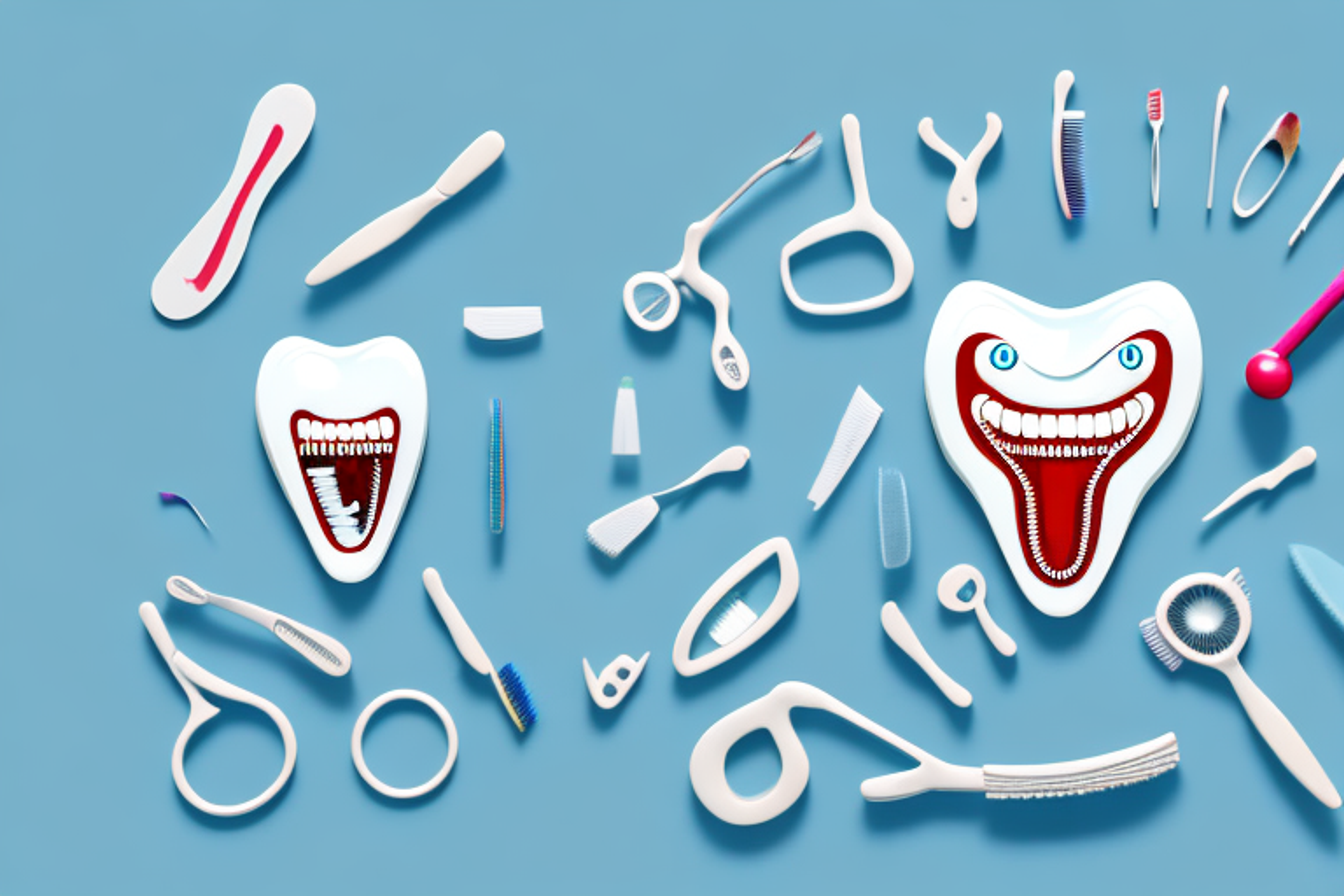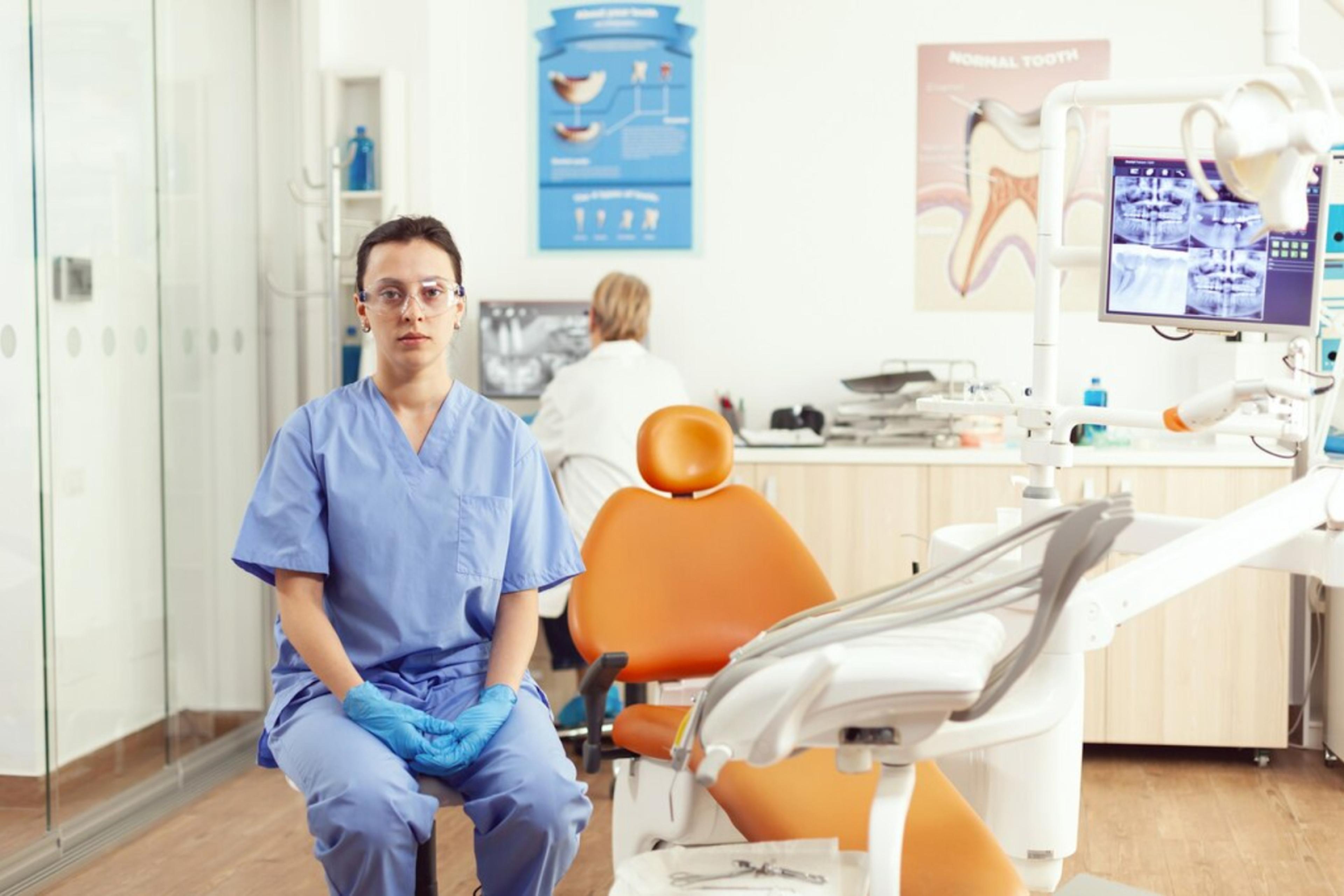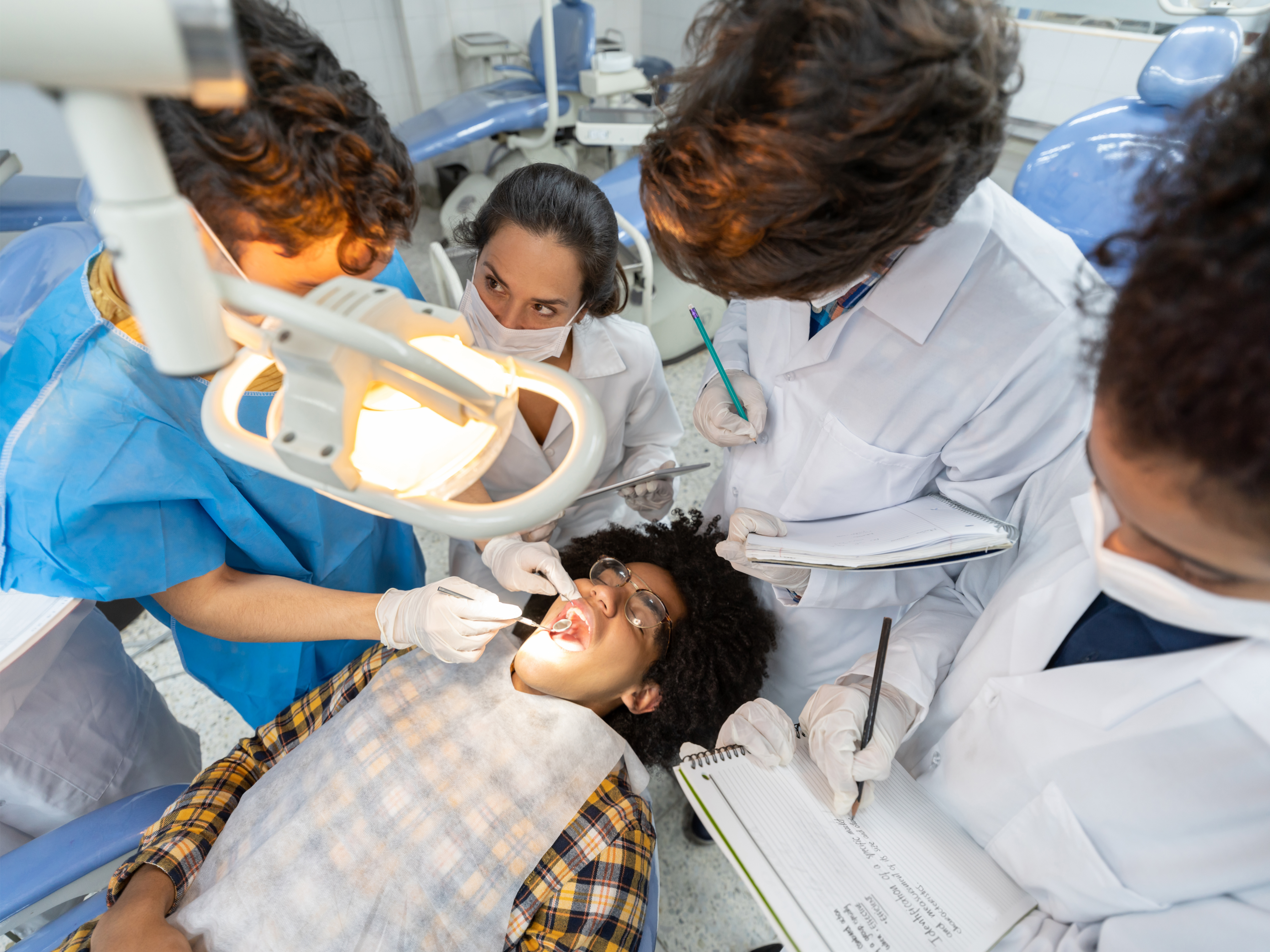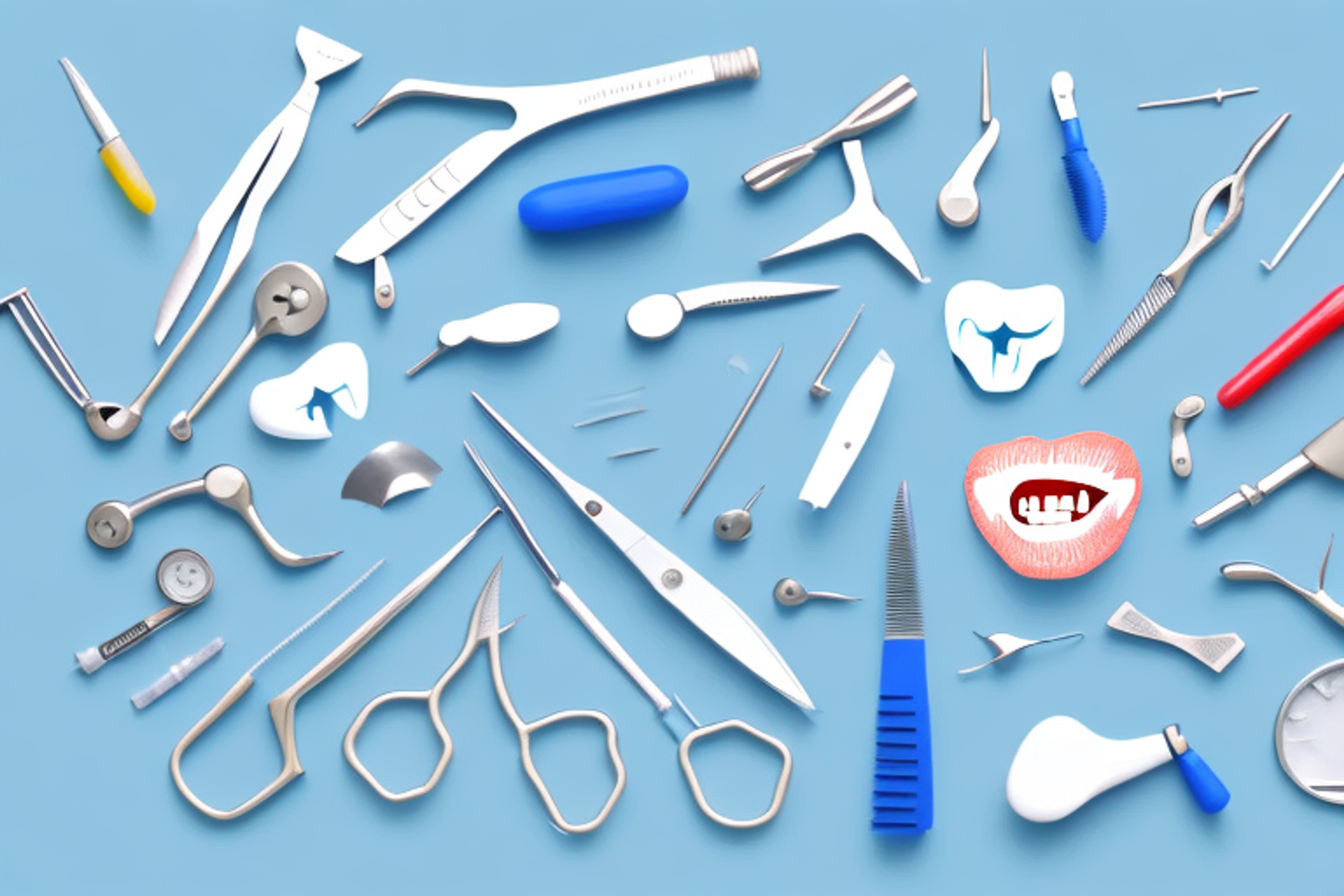The Top 10 Schools for Dental Assisting
Discover the top 10 schools for dental assisting and jumpstart your career in the dental field.
Posted April 10, 2025

Table of Contents
If you're interested in a career as a dental assistant, the first step is finding the right school. With so many options out there, it can be overwhelming to know where to start. However, we've done the research for you and narrowed it down to the top 10 schools for dental assisting.
What to Consider When Choosing a Dental Assisting School
Before we dive into the top 10 schools, it's important to understand what to look for when choosing a dental assisting program. Accreditation should be a top priority, as it ensures that the program meets certain standards and will prepare you for certification exams. Additionally, you'll want to consider the cost of tuition, financial aid options, job placement rates, and the quality of the curriculum and faculty.
Another important factor to consider is the location of the school. If you plan on working in a specific area after graduation, it may be beneficial to attend a school in that area. This can help you establish connections and gain experience in the local dental community. On the other hand, if you're open to working anywhere, attending a school in a larger city may provide more job opportunities.
It's also worth researching the types of clinical experiences offered by the program. Some schools may offer more hands-on experience in a dental office, while others may focus more on classroom learning. Consider your learning style and career goals when choosing a program that offers the type of experience you're looking for.
The Importance of Accreditation in Dental Assisting Programs
Accreditation is crucial when it comes to dental assisting programs. The Commission on Dental Accreditation (CODA) is the national accrediting body for dental assisting programs, and it's essential that your chosen program is CODA-accredited. This ensures that the program meets strict standards and will properly prepare you for certification exams.
One of the benefits of attending a CODA-accredited dental assisting program is that it can increase your job prospects. Many employers prefer to hire graduates from accredited programs because they know that these individuals have received a high-quality education and training. Additionally, some states require that dental assistants graduate from an accredited program in order to obtain licensure.
Another advantage of attending an accredited program is that you may be eligible for financial aid. Many scholarships, grants, and loans are only available to students who attend accredited institutions. By choosing a CODA-accredited program, you may have access to more financial resources to help you pay for your education.
Benefits of Attending a Dental Assisting School
Attending a dental assisting school can provide numerous benefits beyond just the education itself. For one, you'll receive hands-on training in a clinical setting, allowing you to gain real-world experience. You'll also have the opportunity to network with dental professionals and potentially secure a job before graduating. Additionally, many schools offer job placement assistance and other resources to help you jumpstart your career.
Another benefit of attending a dental assisting school is the opportunity to learn about the latest technology and techniques in the field. Dental technology is constantly evolving, and attending a school can ensure that you are up-to-date with the latest advancements. This can make you a more valuable asset to potential employers and increase your chances of success in the field. Furthermore, dental assisting schools often offer continuing education courses, allowing you to further expand your knowledge and skills throughout your career.
Tuition Costs and Financial Aid Options for Dental Assisting Schools
While the cost of attending a dental assisting school can be daunting, there are a variety of financial aid options available to help ease the burden. Most schools offer tuition payment plans, scholarships, and grants. Additionally, federal student loans may be available to those who qualify. It's important to research all of your options and make a plan for paying for your education before enrolling in a program.
One option for financial assistance that is often overlooked is employer tuition reimbursement. Many employers offer this benefit to their employees who are seeking to further their education. It's worth checking with your employer to see if they offer this type of program.
Another factor to consider when looking at the cost of dental assisting school is the potential return on investment. According to the Bureau of Labor Statistics, the median annual wage for dental assistants was $40,080 in May 2020. This means that the cost of tuition could potentially be recouped relatively quickly once you enter the workforce.
Job Placement Rates for Graduates of Top Dental Assisting Schools
The ultimate goal of attending a dental assisting program is to land a job in the field. When researching schools, it's important to look at their job placement rates for graduates. Some schools may have strong ties to local dental offices and can offer promising job prospects. Others may offer internships or clinicals that lead to employment opportunities. It's important to keep in mind that job placement rates can vary depending on location and other factors.
Another important factor to consider when looking at job placement rates is the type of dental assisting program you are interested in. Some programs may focus more on administrative tasks, such as scheduling appointments and managing patient records, while others may focus more on clinical skills, such as taking X-rays and assisting with dental procedures. Depending on your career goals, you may want to choose a program that aligns with your interests and strengths.
It's also worth noting that job placement rates may not tell the whole story. While a high job placement rate is certainly a positive sign, it's important to consider the quality of the jobs that graduates are landing. Are they full-time positions with benefits, or are they part-time or temporary positions? Are they in reputable dental offices with experienced dentists, or are they in less established practices? These are all important questions to ask when evaluating job placement rates.
Curriculum Comparison Between Top Dental Assisting Schools
Not all dental assisting programs are created equal. When comparing schools, it's important to examine the curriculum in detail. Look for coursework that covers a wide range of dental procedures and techniques. Additionally, consider whether the program has any unique offerings, such as specialized training in pediatric dentistry or orthodontics.
Another important factor to consider when comparing dental assisting programs is the amount of hands-on experience provided. Look for programs that offer clinical rotations or externships, where students can gain real-world experience working in a dental office. This type of experience can be invaluable when it comes to finding a job after graduation.
It's also worth considering the length of the program and the type of degree or certificate offered. Some programs may be shorter and offer a certificate, while others may be longer and result in an associate's degree. Depending on your career goals, one option may be more beneficial than the other.
Student Testimonials and Reviews of Top Dental Assisting Schools
One of the best ways to get a sense of what a dental assisting program is really like is to read reviews from current or former students. Many schools will have reviews available on their website or through third-party sites like Yelp. Look for reviews that discuss the quality of the curriculum, the effectiveness of the faculty, and the overall student experience.
Faculty Qualifications and Experience at Top Dental Assisting Schools
The quality of the faculty at a dental assisting program can greatly impact the quality of education you receive. When researching schools, take a close look at the faculty members and their experience in the field. Look for faculty members who have experience working in dental offices and who hold teaching certifications or degrees.
Campus Facilities and Resources Available to Students at Top Dental Assisting Schools
Finally, it's important to consider the campus facilities and resources available to students at each school. Look for programs that have state-of-the-art dental labs and equipment, as well as opportunities for hands-on training. Additionally, consider whether the school offers any resources to help students succeed, such as tutoring services or career counseling.
By taking these factors into consideration, we've narrowed down the top 10 schools for dental assisting:
- University of Florida College of Dentistry
- Indiana University School of Dentistry
- The Ohio State University College of Dentistry
- University of North Carolina Chapel Hill School of Dentistry
- University of Maryland School of Dentistry
- University of Michigan School of Dentistry
- University of Pittsburgh School of Dental Medicine
- University of Texas Health Science Center at San Antonio School of Dentistry
- University of Washington School of Dentistry
- Virginia Commonwealth University School of Dentistry
It's important to remember that this is not an exhaustive list, and there are many other great programs out there. However, these schools stood out to us for their strong accreditation, high job placement rates, and overall quality of education.
Ultimately, the choice of dental assisting program is a personal one that depends on your individual needs and goals. By taking the time to research each school thoroughly and weigh the pros and cons, you can make an informed decision that sets you up for success in your future career as a dental assistant.











